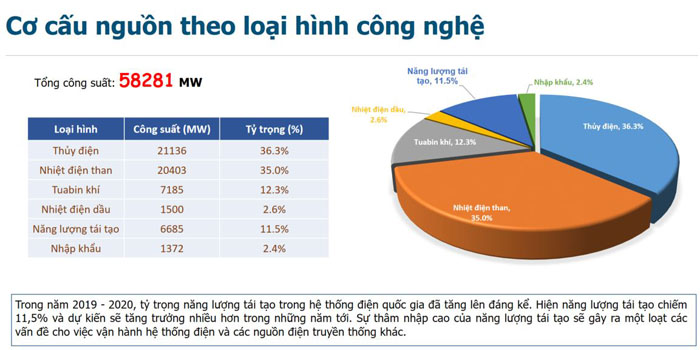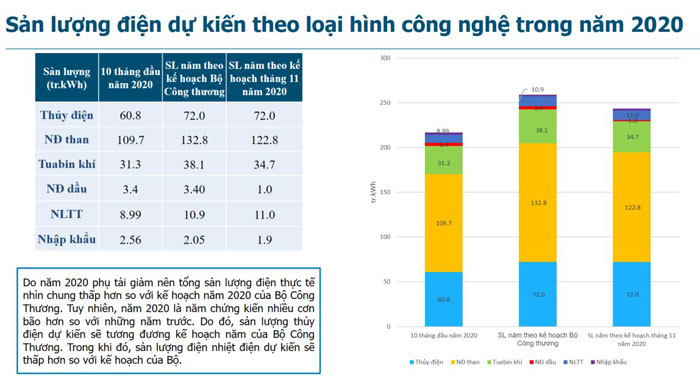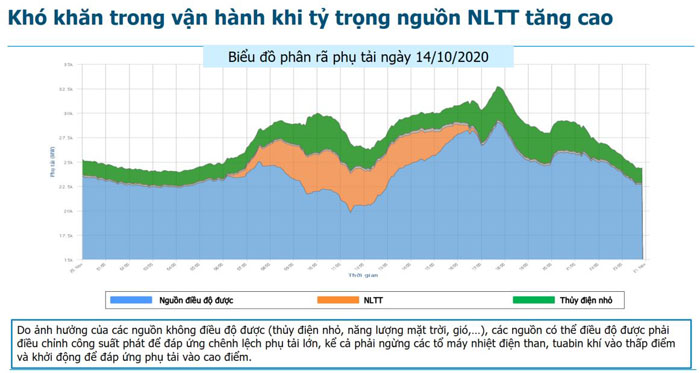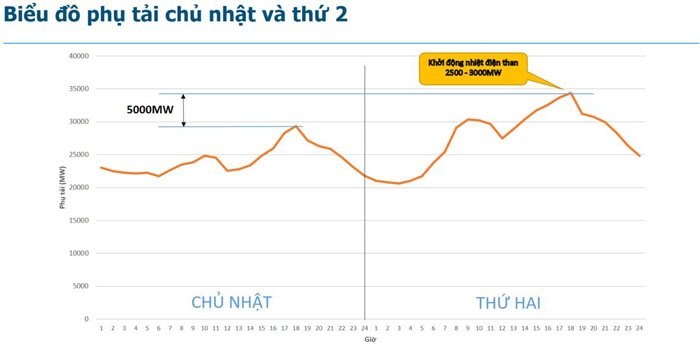
Director of the National Load Dispatch Center Nguyen Duc Ninh
- Some renewable energy plant owners have seen their generating capacity fed back to the grid reduced, especially in the rainy season. How is this going?
- In recent years, Vietnam Electricity (EVN) and its member units have made utmost efforts to invest in upgrading and renovating power networks in order to release power output from renewable energy plants. However, investment in transmission network infrastructure takes longer time and has not kept up with the rapid development of renewable energy sources in order to enjoy preferential electricity purchase prices at attractive rates.
Therefore, since the beginning of 2020, in times of high radiation, not only some wind power plants, but also other renewable energy sources in Binh Thuan and Ninh Thuan provinces have not generated their maximum capacity.
Since October 2020, consecutive rains and floods in the Central region have led power demand to decrease even lower, while water inflow to hydropower reservoirs is very abundant. Most of the hydropower reservoirs in the central region and some hydropower reservoirs in the north have to discharge water (to dispose of excess water which cannot be used for power generation) with a total discharge of about 10.87 billion cm.
In order to ensure a balance between power supply and demand when the demand is low such as on Sundays at noon (also at the times when solar power plants are likely capable of generating their highest power), the system dispatching agency had to allocate generating capacity from wind, solar power plants and even from hydropower plants which are discharging water, based on optimization algorithms and automatic control software systems such as AGC (Automatic Generation Control).
This operation is to ensure safe operation of the power system after having cut off or operated traditional power sources at a minimum output (operating only the units according to technical requirements, inter-reservoir operation procedures and commercial contracts) while maintaining the amount of capacity/output reduction from renewable energy power plants to a minimum.

- Someone will raise the question "why do we mobilize high cost renewable energy when in the rainy season, water is abundant and hydropower costs are low? Water excess will have to be discharged, leading to a rise in the costs of power”…
- Electricity purchase by EVN of renewable energy must comply with the model Power Purchase Agreement (PPA) and at the energy price issued by the Government.
The principle of giving priority to purchasing all renewable energy in the PPA signed between and by EVN with the investors is implemented in all cases, except for the following two cases:
In case power lines are overloaded, priority is given to reduction of traditional energy sources related to these lines first, except for hydroelectric plants that are discharging water.
In case of decrease in power demand, the power system gains excess power, priority is given to reducing traditional energy sources first, except for hydroelectric plants that are discharging water.

Therefore, there won’t be cases when EVN buys high-priced electricity in the same time discharges water and does not generate power from low-cost hydropower plants.
- How is the contribution of renewable energy sources in the system currently?
- Up to now, more than 6,150MW of solar power (including about 1,500MW of rooftop solar power), nearly 500MW of wind power, and more than 170MW of biomass power have been put into operation in the national power system.
Thus, the total capacity of these renewable energy sources currently accounts for more than 11% of the power source capacity of the whole system. However, energy output generated from renewable energy only accounts for nearly 4% of the energy output of the whole system in the first ten months of 2020.

At present, actual monitoring data shows that in daily 10am–1pm time frame, generating capacity from solar power plants only ensures about 18-20% of the power system demand. On holidays (sundays, holidays, New Year festival, etc.), when many reductions in capacity are made due to power excess, from 850-1,500MW, this rate can increase to 25-26% and this trend continues to increase.
Moreover, the total amount of this solar power capacity will decrease to 0MW at 18:00, while the load chart of the Vietnamese power system has many peaks during the day different from advanced countries in the world. Reduction in power capacity is a challenge in regulating and operating the power system to ensure safe and stable power supply.
For the Vietnamese power system, the ratio of renewable energy capacity to peak load capacity will be more meaningful in assessing the impact of renewable energy.
- Do the rapid increase in renewable energy sources which are dependent on nature and weather and the absence of regulations on storage facilities make it difficult to dispatch the power system, sir?
- Renewable energy is characterized by its primary energy source, and it is difficult to store it as other traditional sources.
This fact causes many difficulties in dispatching work when in fact and in the daily power consumption chart of our country, there is a large difference between times in a day and days in a week, while the power system is an independent one with transmission limits due to stability issues on the North-Central-South 500kV lines.

Power backup solutions and complementary dispatching of flexible power sources (gas or DO turbine power units) have been used, but the power system is therefore potentially unsafe and unstable, especially when a major failure occurs on the system (coal/gas-fired thermal power units, 500kV transmission lines, large clouds affecting solar irradiation during daytime, etc.)
This, in the long term, will affect the stable and reliable operation of power plants and the national power system.
- So is it necessary to set limits on renewable energy sources in the overall power system?
In fact, the mechanism in curtailment of renewable energy sources has been applied by many countries around the world when the rate of this power source reaches a certain level (around 20-30%). The review of these new mechanisms is very important for stable operation of Vietnam's power system in the coming time, in the context of increasing rise in renewable energy.
|
Total energy production and import of the whole system in the first ten months of 2020 reached 205.6 billion kWh, up 2.3% over the same period last year. In which:
+ Hydropower dispatched reached 58.92 billion kWh, an increase of 1.22% over the same period in 2019.
+ Coal thermal power reached 103.74 billion kWh, an increase of 6.35% over the same period in 2019
+ Gas turbine power reached 29.69 billion kWh, decreasing by 17.98% compared with that of the same period in 2019
+ Oil thermal power reached 1.043 billion kWh, decreasing by 11.58% compared to that of the same period in 2019.
+ Renewable energy (wind power, solar power, biomass power) reached 8.95 billion kWh. Solar power alone reached 7.95 billion kWh (2.28 times more than the same period in 2019).
+ Imported electricity reached 2.57 billion kWh, decreasing by 7.41% compared with that of the same period in 2019.
In the first ten months of 2020, power energy produced by EVN and Power Generation Corporations (including joint stock companies) will reach 115.71 billion kWh, accounting for 56.28% of the system's power production.
Due to the impact of the COVID-19 pandemic, the commercial energy for the whole year 2020 is estimated at 215.2 billion kWh, equal to 94.4% of the annual plan and increasing by 2.6% compared with that of 2019.
|
evn.com.vn
Share